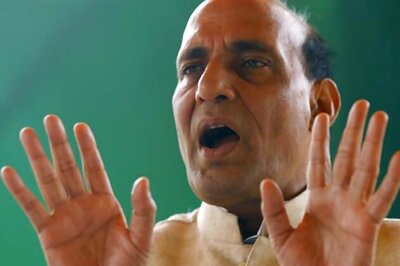
views
Angelo Mathews’ bizarre dismissal in the game between Sri Lanka and Bangladesh in the ongoing ICC ODI World Cup 2023, where the Lankan player was timed out, made him the first batsman in the history of international cricket to be dismissed through that method.
Follow all the action from the ICC Cricket World Cup 2023 including the World Cup schedule, World Cup 2023 results, and ICC Cricket World Cup points table. Players are vying to top the World Cup 2023 Most Runs and World Cup 2023 Most Wickets charts.
Following the unprecedented event, here is a look at all the types of dismissals permitted in the game of cricket.
Bowled:
Probably the most straightforward method of dismissal as the batsman is given to be out if the ball hits the wicket and dislodges a bail, without interference from the fielding side.
The batsman is also sent back to the hut even if the ball dislodges the bails after coming in contact with the batsman or the willow.
Caught:
A player is declared out if the fielding side manages to collect the ball coming off the batsman’s willow before the leather comes in contact with the ground within the confines of the boundary limit.
Hit the ball twice:
A batsman will be asked to walk back to the pavilion if he strikes the ball twice after the ball has been released from the bowler’s arm.
However, the batsman can block the ball from hitting the stumps to guard the wicket after having struck it once.
Hit wicket:
If the batsman strikes the wicket with his person or that bat before completing any action in receiving a delivery, he will be declared out.
Leg Before Wicket:
Known as LBW in short, a player will be called out if a ball travelling in a wicket-bound trajectory, is intercepted by the body of the batsman without coming in contact with the player’s bat or gloves first.
Obstructing the field:
A batsman will be given out if he intentionally tries to obstruct or hinder a fielder from fulfilling his duty.
Famously, Pakistani legend Imzamam ul Haq was dismissed in this manner against India as he blocked a throw aimed at the stumps while the Pakistani batter tried to make a run.
The batsman will also be declared out for obstructing the field if he strikes the ball with the hand not holding the bat while facing a delivery.
Run Out:
A batsman will be instructed to go back to the dugout if the fielding side manages to dislodge a bail or uproot a stump before the batsman can reach the crease during the attempt to take a run.
Stumped:
A player is declared to be stumped if the keeper manages to dislodge a bail off the stumps before the batsman can secure his crease while facing a delivery.
Time Out:
After the fall of a wicket, the incoming batsman must be ready to receive the next delivery within 3 minutes. If this requirement is not met, the incoming batter will be out, timed out.




















Comments
0 comment